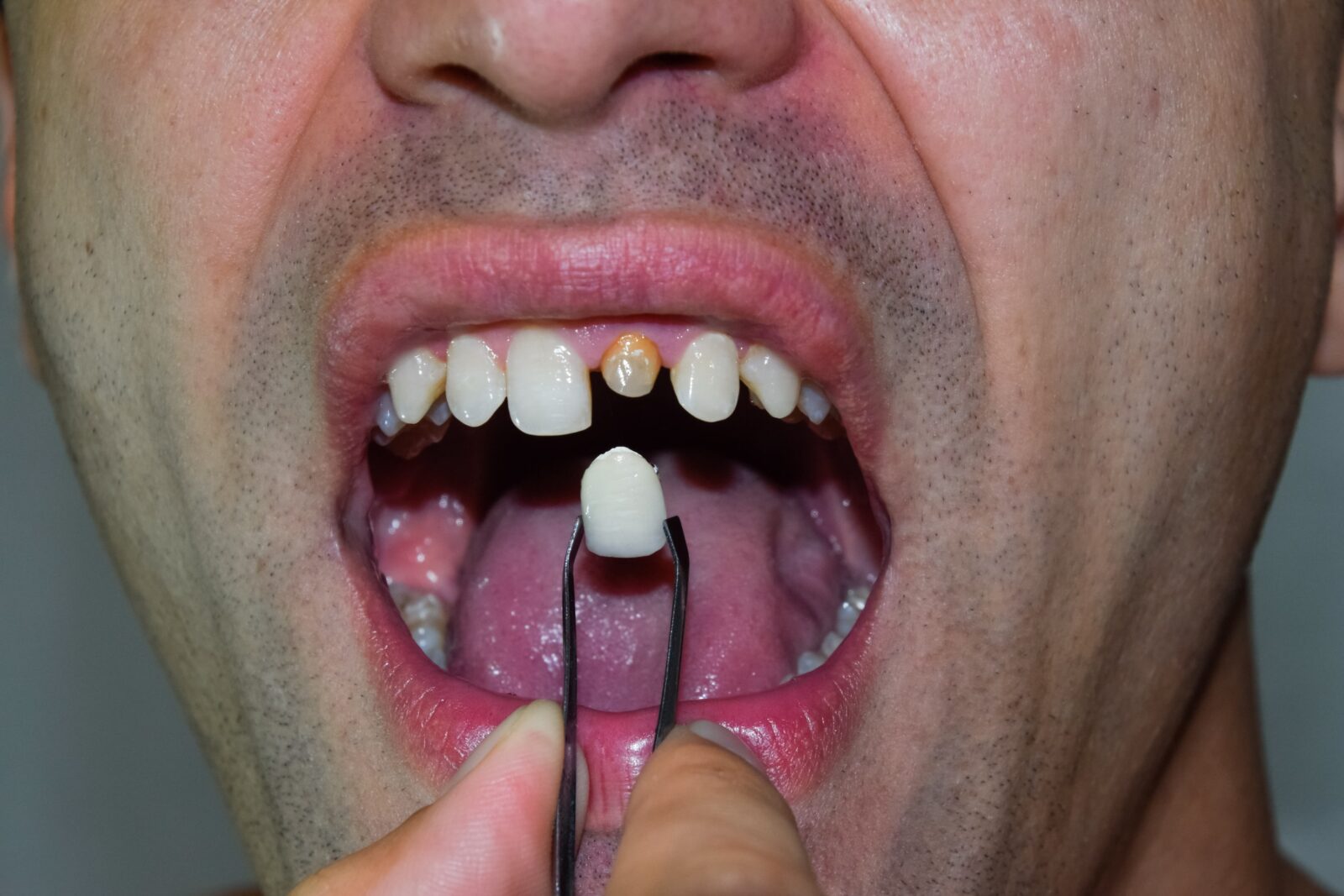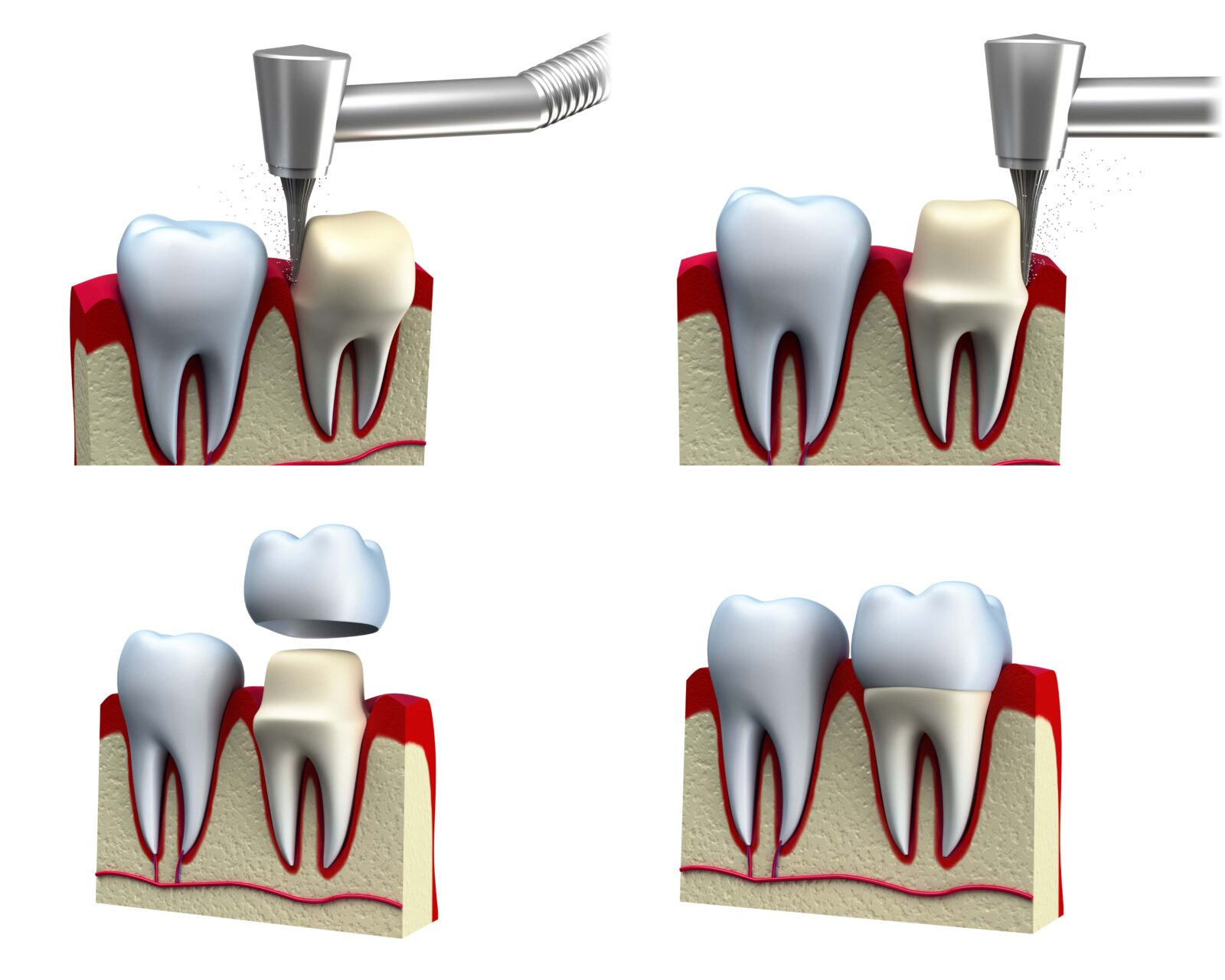Do you have a tooth that is decayed, broken, or just not looking good? Dental crowns are the answer to your problems. A dental crown is an artificial tooth cap that covers the top of your natural tooth and is bonded into place with dental cement. They are a popular option for fixing many dental problems. In this blog, we will talk about five different things that dental crowns can fix and how they are placed.
Teeth that are Decayed
Decayed teeth can occur when the bacteria found in plaque eat away at the tooth enamel, causing cavities to form. Small cavities can be filled with a dental filling, but larger cavities may require a dental crown to restore the tooth. This is because removing large amounts of decayed tissue can weaken the overall structure of the tooth. Therefore, placing a crown over the tooth will help to reinforce the tooth and protect it from damage. If you have had root canal treatment, it is also important to get a crown placed over the affected tooth so that it can fully heal and be protected from both damage and decay.
Teeth that are Broken

If you have a broken tooth, a dental crown can be used to restore its function and appearance. A dental crown can also help to strengthen a broken tooth and prevent it from breaking further. Although superficial cracks or chips in your teeth can often be repaired with composite resin, if the chip or crack extends down into the dentin, a dental crown may be needed. Broken or fractured teeth in the back of your mouth are best restored by a dental crown since crowns provide extra support and protection for teeth that are prone to breakage. This is especially true for molars, which are used for grinding food.
Teeth with Imperfections
Even when teeth are free from damage and decay, sometimes they can have other types of issues. Imperfections such as stained, discolored, oddly shaped, or unevenly sized teeth can greatly affect a person’s self-esteem. If you have imperfect teeth that are affecting your confidence and happiness, dental crowns may be the solution for you. Cosmetic concerns can be easily dealt with using a personalized treatment plan which includes porcelain dental crowns that fit over your natural teeth. This allows you the best of both worlds: you get to keep your natural teeth and their appearance improves!
Teeth that are Sensitive
If you have sensitive teeth, you are unfortunately all too familiar with the pain that is tooth sensitivity. Although tooth sensitivity can affect any type of teeth, it is often a sign that the enamel on your teeth has been worn down. In addition to being unsightly and causing pain, when there isn’t enough protective enamel left on your tooth, hot or cold foods and drinks will cause you unnecessary discomfort. Dental crowns can be used as a shield to reduce tooth sensitivity by protecting the inside of the tooth from being affected by temperature changes.
A Bite that is Uneven
Unevenly sized teeth are a cosmetic imperfection that can potentially affect the function of your teeth and jaw. Uneven teeth are problematic because they can cause the bite to be uneven, which can lead to problems such as TMD. In order for the opposing teeth to meet properly and create a balanced bite, it is important that all of your teeth are of equal size. Dental crowns are often used to correct this problem by evening out tooth size. An even bite takes pressure off the jaw joint and reduces the risk of TMD.
Dental Crown Placement Process
The placement of dental crowns takes two appointments. The first appointment is when the tooth is prepared for the crown and a dental impression is taken. The second appointment is when the custom-made dental crown is placed in your mouth.
The first step in getting a dental crown is to have an evaluation by your dentist. During this visit, they will assess your oral health and determine if you are a candidate for dental crowns. If you are, your dentist will go over the procedure with you in detail and explain what to expect.

During this visit, they may also take x-rays of your mouth so that they can get an accurate depiction of the tooth that needs to be crowned. They will then shape or prepare your tooth for the crown. This includes removing any decay, cleaning out your tooth, and adjusting it to make room for the dental crown.
The second step is taking an impression of your mouth so that a custom-fitted dental crown can be made. During this appointment, you will receive local anesthesia; therefore, no pain should be experienced during this visit. The impression is sent to a dental laboratory where your crown will be created.
While you are waiting for your permanent dental crown, you will be given a temporary one to wear. This temporary crown is made of plastic or metal and it helps protect the tooth while you are waiting for the permanent one. It usually takes two to three weeks for the permanent dental crown to be created.
The final step is the placement of your permanent dental crown. This appointment usually takes around an hour and you will be given local anesthesia so that you won’t feel any pain. Your dentist will carefully place the permanent dental crown over your prepared tooth and check to make sure it fits correctly and looks natural.
In Conclusion
Dental crowns can be a solution for a variety of dental problems such as decay, damage, imperfections, sensitivity, or an uneven bite. They are are created to fit over your natural teeth and can be completed in two dental appointments. If this sounds like the right option for you or someone close to you, contact our office today! We will do everything we can to help make sure dental crown placement is as easy as possible.
